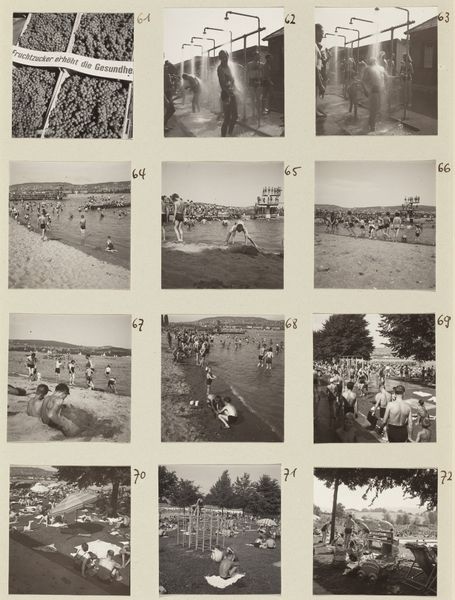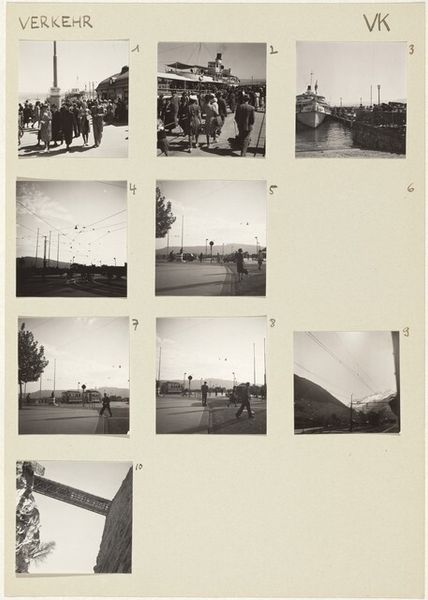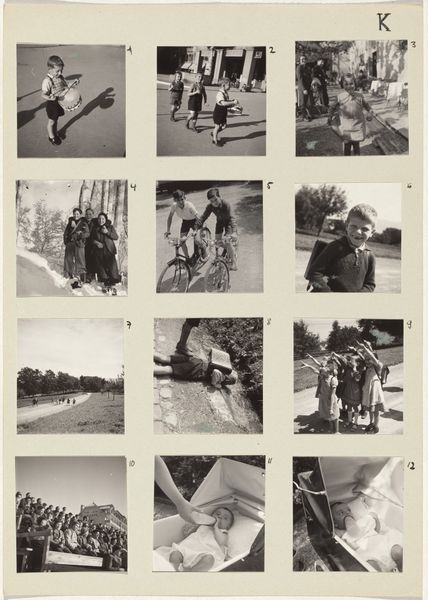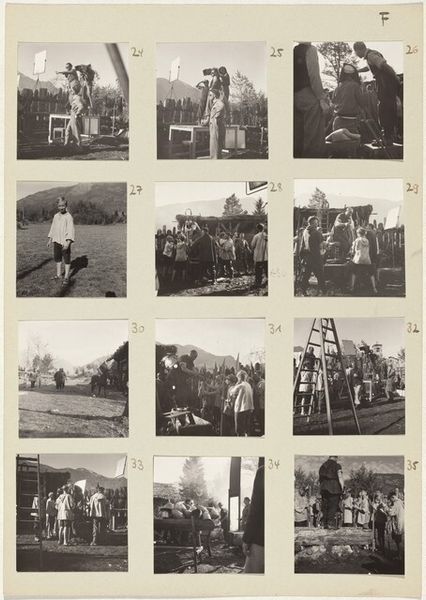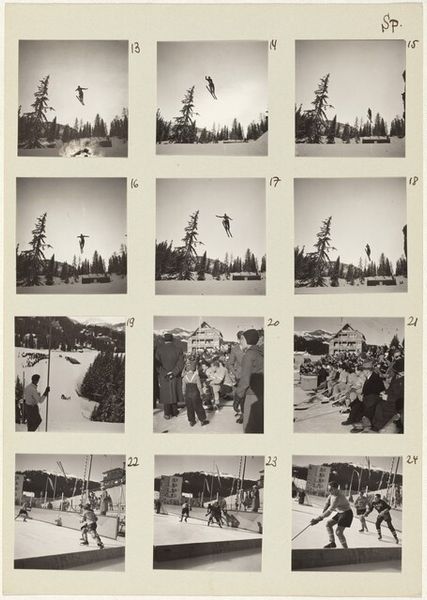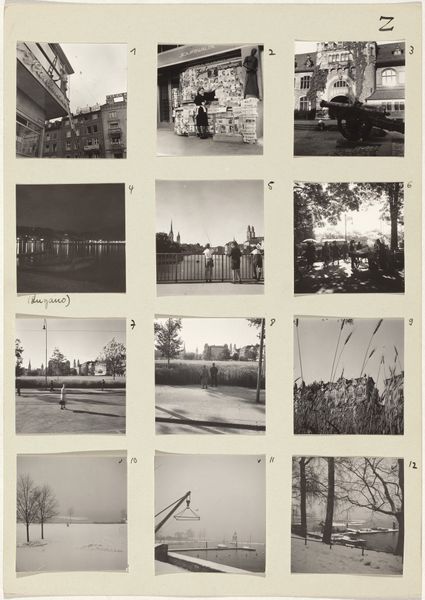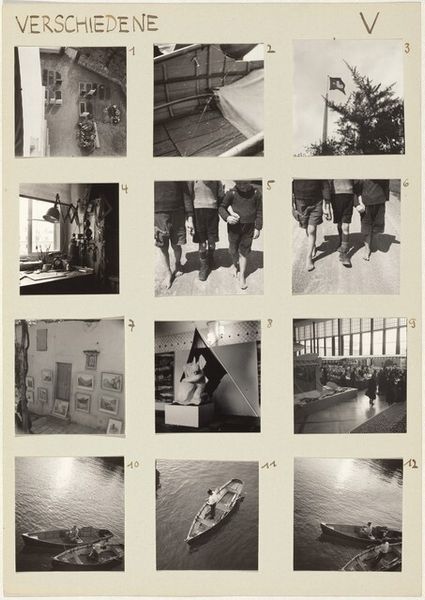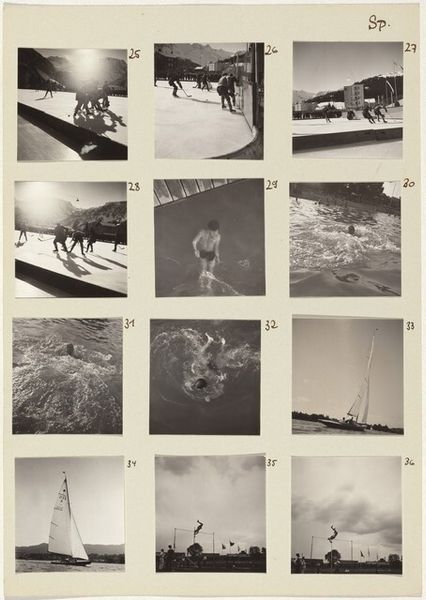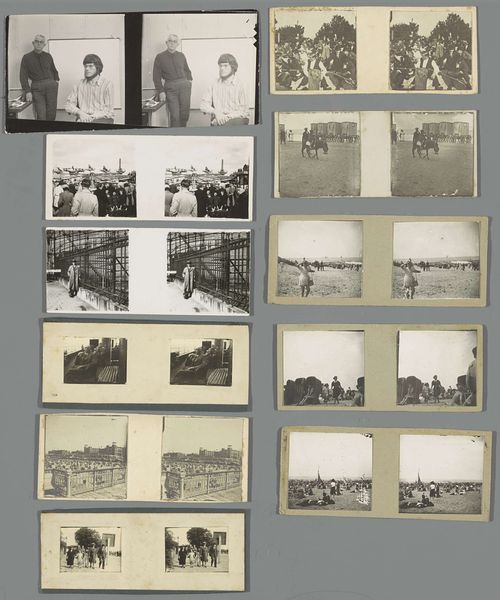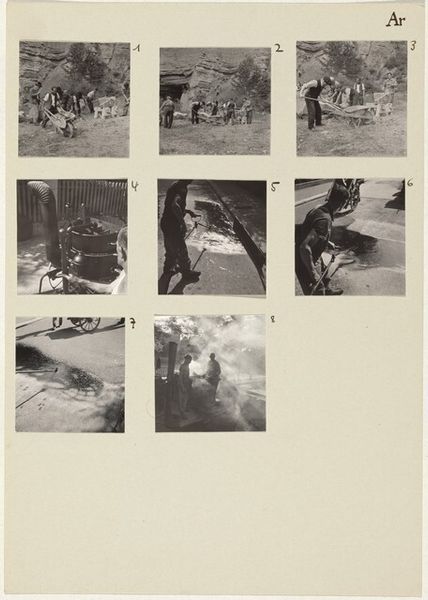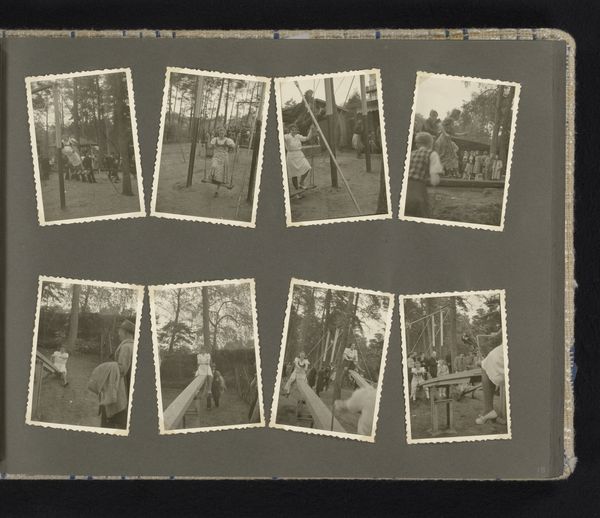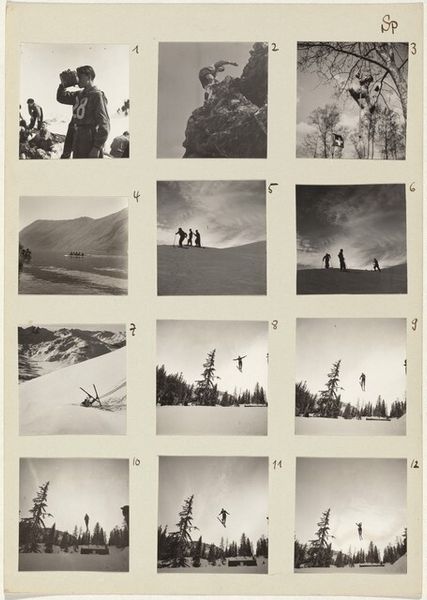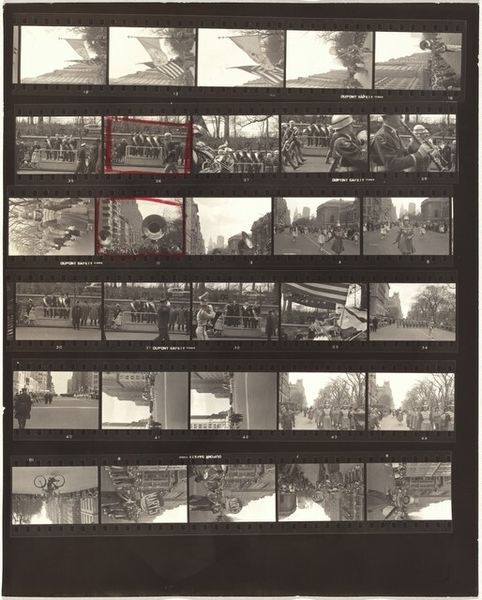
photography, gelatin-silver-print
#
street-photography
#
photography
#
gelatin-silver-print
#
genre-painting
Dimensions: sheet: 29.6 x 21 cm (11 5/8 x 8 1/4 in.)
Copyright: National Gallery of Art: CC0 1.0
Curator: Robert Frank's series "Die Reportage 73-84," captured between 1942 and 1946, is comprised of gelatin silver prints showing public life. It is organized into a grid format that resembles contact sheets from photojournalism, or perhaps even a commemorative photo album. Editor: It feels a bit voyeuristic, observing these candid moments. The high contrast of the gelatin silver enhances that effect—each small picture a distinct glimpse into lives mostly unsmiling. It makes the viewer feel detached yet strangely observant. Curator: This aesthetic choice lends a certain gravity to the imagery. Frank employs black and white as more than just an aesthetic, but rather to create a timeless quality, while simultaneously heightening our awareness of detail. I read a deeper continuity when examining these individual snapshots arranged to produce an underlying collective narrative, specifically during WWII and the immediate aftermath. Editor: You raise an interesting point about collectivity. Look at how space is carved—masses gathered. The recurring shapes of rows, or lines, suggest an almost unsettling desire for order and control in public spaces. This is striking within each photo individually, but amplified exponentially when arranged within the strict geometry of the grid. Curator: These rows also become visual reminders of solidarity during difficult times, particularly visible in these active gatherings as Germany recovered during this time. Each image functions as a symbol for a community coming together after so much disruption—the athletics events could easily be read as a demonstration of re-establishing order. Editor: I suppose I focus primarily on the composition, on those inherent, physical structures that reflect control, but I cannot argue against a deeper understanding of cultural intent being at play here. Curator: Yes, while you rightly see the patterns within patterns, consider how photographic series allow one to read individual symbols into wider cultural trends. It speaks volumes about that specific historical context. Editor: A final thought. The choice to present these images as a collection shifts the impact; one moves through separate events, yet cumulatively absorbs their significance. It goes beyond mere documentation, towards some form of collective visual memory.
Comments
No comments
Be the first to comment and join the conversation on the ultimate creative platform.
